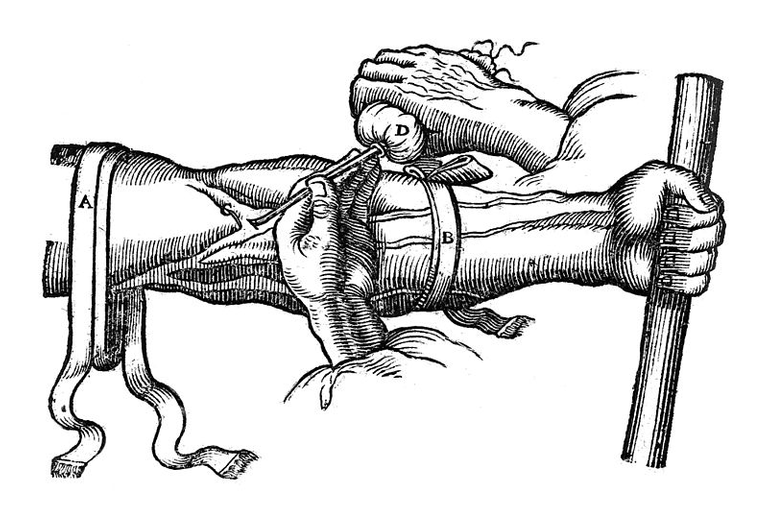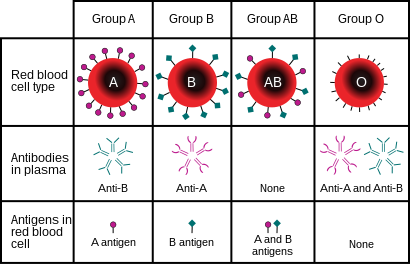The concept of blood transfusion until 1901 - Science improvements
What was the state of blood transfusions prior to the year 1901?
See the history!!!

File:Blood transfusion, 17th century. File:Blood Transfusion, 17th Century. Wellcome M0012957.jpg - Wikimedia Commons. 
People in the past thought, like many people do today, that the spirit lived in the blood. They also believed that the vital energy of the body was carried through the blood of the body. They reasoned that because this essential energy could be depleted or lost over time, it must be the source of diseases that cause people to become ill or old. They also believed that insanity was an illness that affected a person's spirit. It seemed like the healthiest and most direct approach would be to use fresh young blood to replace the blood that had been squandered and corrupted. Therefore, it really shouldn't come as a surprise that people keep looking to blood transfusions as a potential treatment for illness.
The procedure is known to be risky due to the current state of our understanding of infectious diseases, immunity, and how clots form in the blood. This helps explain why early attempts to give blood transfusions didn't work and sometimes made things worse. This tension between the need to transfuse and the risks that come with it is a big reason why interest in and focus on the transfusion procedure has gone up and down over time. But one of the most interesting parts of the history of medicine came about because of a mix of personal feelings, political goals, and religious beliefs at different points in time.
Long before blood transfusions were thought to be a good way to treat illness, people from many different cultures thought that blood had some kind of healing power and could be used to treat illness. The concept of restoring a sick person to health by transfusing them with healthy blood is a very old one; however, up until the modern era, such a thing could only exist in myths.
Both Christopher Wren's invention of a syringe for giving drugs intravenously in 1659 and William Harvey's ground-breaking description of how blood moves through the body in 1628 were the two scientific breakthroughs that made blood transfusion a possible medical treatment. Soon after, medical practitioners in England and France began experimenting with animal blood transfusions. In 1666, an English doctor named Richard Lower is said to have done the first successful blood transfusion between animals.
A young guy suffering from a temperature on June 15, 1667, was the recipient of the first direct blood transfusion. A physician by the name of Jean-Baptiste Denis transfused approximately 12 ounces of blood from a goat into the young guy. The health of the young guy improved rapidly. Not long after that, Denis did a second blood transfusion, which also seemed to be successful. On the other hand, neither of the patients who received the third nor the fourth transfusion fared very well. The third individual passed away shortly after receiving a transfusion, and the fourth individual passed away while they were receiving a transfusion. According to the fourth patient's wife, Denis was the one who murdered her husband. He was brought before a judge, and while he was found not responsible, the judge ruled that people should not be permitted to receive blood transfusions. Not much longer after that, blood transfusions were declared illegal by the French government, the Catholic Church, and the Royal Society. It wasn't until the middle of the 19th century that the technique was removed from the standard practice of medicine.
There was no foolproof method of giving blood to another person prior to the discoveries made by Karl Landsteiner in the years 1900 and 1901 regarding blood kinds. When you combine blood from two different blood kinds, which are not compatible with one another, your immune system will have a reaction, which can be deadly. Although we are unable to say for certain, it is conceivable that this was the cause of death for either or both of Denis's patients.
The Landsteiner creations from 1897
Landsteiner agreed to work on cadavers at the Institute of Forensic Anatomy in Vienna after accepting a job there in 1897. Over the next ten years, he looked at the bodies of nearly 4,000 dead people and wrote over 75 articles about what he found. 52 of these entries talk about blood chemistry. When blood from one person is brought into contact with blood from another person, agglutination reactions take place, as described by Landsteiner. In a paper he wrote in 1900, Landsteiner only mentioned agglutination in a footnote. The next year, in his paper "Agglutination of Normal Human Blood," he wrote more about this finding.
Landsteiner saw a pattern of antigen responses when he mixed blood serum from different people. Antigens on the outside of blood cells varied from person to person, according to Landsteiner. If blood from what he called the A or B group was put into a person from the opposite group, the body would have an immune response. Landsteiner found that this response caused the blood cell that had the invasive antigen to burst. Large groups of cells that had burst together formed clusters that could block arteries and cause shock or death. Landsteiner initially distinguished between blood groups A, B, and C. Later, type-O was used more frequently to refer to the C blood type. One of Landsteiner's pupils discovered a fourth blood type, AB, in 1902; this blood type caused an adverse response when mixed with blood of blood types A or B. In his honor, the Landsteiner nomenclature (A, B, AB, and O) was officially approved by the Health Committee of the League of Nations in Geneva, Switzerland, in 1930. This naming scheme was continued into the first decades of the twenty-first century.
The forensic and medical disciplines were immediately impacted by Landsteiner's blood typing method. In 1902, Landsteiner and Max Richter explained at the Vienna University Institute of Forensic Medicine how blood evidence from the scene of a crime could be used to help solve the case. It was possible for researchers to use this system to identify whether a blood sample carried the A-antigen, the B-antigen, both the A- and B-antigen, or neither antigen (type O). Investigators could draw the conclusion that the blood sample left at the crime scene was not from the suspect if the suspect's blood contained a distinct antigen. However, less than 5% of people have AB-type blood, and about 50% of people have O-type blood. So, if a blood sample and a suspect both had the same blood type, the detectives couldn't be sure who did it. Doctors could conduct secure blood transfers thanks to the ABO system.
The blood group ABO

ABO blood group system - Wikipedia. (2017, October 26). ABO Blood Group System - Wikipedia. https://en.wikipedia.org/wiki/ABO_blood_group_system
Even though the ABO blood group name has three letters, it only tells if you have the A and B antigens or not. They're both glycoproteins. Blood type A individuals have erythrocytes with A antigens on their cell sides, while blood type B individuals have erythrocytes with B antigens. A person can also have blood type AB if both A and B antibodies are present on their erythrocytes. Blood type O is reserved for those who do not possess the A or B antibodies. The ABO blood types are inherited from parents.
Generally, an antibody cannot be made until the body has been exposed to a foreign antigen. With regard to the ABO blood type, this is not true. People with type A blood already have antibodies to the B antigen in their blood plasma, even though they have never been around blood that doesn't match. If these antibodies, which are also called anti-B antibodies, ever come in contact with erythrocytes that have B antigens, they will clump together and destroy the red blood cells. Comparable to people with type B blood, people with type A blood already have anti-A antibodies. People with blood type AB, which has both antigens, do not have antibodies to either of them by nature. Anti-A and anti-B antibodies exist in the blood plasma of people with type O blood, despite the absence of antigens A and B on their erythrocytes.
Risks Associated with Donation
If a person gets blood during a transfer that doesn't match his or her blood type, it could cause serious problems. If donor blood cells are targeted by corresponding host antibodies, acute hemolytic transfusion reactions happen. Due to endothelial injury brought on by the immune system, this may result in shock-like signs like fever, hypotension, and disseminated intravascular coagulation. Acute kidney failure is also linked to transfusion responses. As a result of neutrophil activation during a transfusion response or pulmonary edema from fluid overflow if plasma volume rises too high, lung damage is also frequently seen. The patient may experience septic shock if the given blood is bacterially tainted.
References
- https://www.nobelprize.org/prizes/medicine/1930/landsteiner/facts/
- Blood Typing and Blood Transfusion | BIO103: Human Biology. (n.d.). Blood Typing and Blood Transfusion | BIO103: Human Biology. https://courses.lumenlearning.com/suny-dutchess-ap1/chapter/blood-typing-and-blood-transfusion/
- Karl Landsteiner (1868-1943) | The Embryo Project Encyclopedia. (2017, February 17). Karl Landsteiner (1868-1943) | the Embryo Project Encyclopedia. https://embryo.asu.edu/pages/karl-landsteiner-1868-1943
- C. (n.d.). Cardiovascular Levels of Organization – Anatomy & Physiology. Cardiovascular Levels of Organization – Anatomy & Physiology. https://pressbooks.ccconline.org/bio106/chapter/cardiovascular-levels-of-organization/
- The Strange, Grisly History of the First Blood Transfusion. (n.d.). Encyclopedia Britannica. https://www.britannica.com/story/the-strange-grisly-history-of-the-first-blood-transfusion
- Magazine, S., & Eschner, K. (n.d.). 350 Years Ago, A Doctor Performed the First Human Blood Transfusion. A Sheep Was Involved. Smithsonian Magazine. https://www.smithsonianmag.com/smart-news/350-years-ago-doctor-performed-first-human-blood-transfusion-sheep-was-involved-180963631/
- Karl Landsteiner (1868-1943) | The Embryo Project Encyclopedia. (2017, February 17). Karl Landsteiner (1868-1943) | the Embryo Project Encyclopedia. https://embryo.asu.edu/pages/karl-landsteiner-1868-1943
- Ike, M., Yohanna, J., & Dakul, D. (2017, September 29). Haemoparasites of volunteer blood donors with National Blood Transfusion Service (NBTS) in Jos, Plateau State. Nigerian Journal of Parasitology, 38(2), 288. https://doi.org/10.4314/njpar.v38i2.29
- Cowan, H. (2017, June 2). The discovery of human blood groups: Karl Otto Landsteiner. British Journal of Cardiac Nursing, 12(6), 290–292. https://doi.org/10.12968/bjca.2017.12.6.290


Before any blood transfusion, it is necessary that you must watch the type of blood group as wrong blood group can lead to death
Thanks for your contribution to the STEMsocial community. Feel free to join us on discord to get to know the rest of us!
Please consider delegating to the @stemsocial account (85% of the curation rewards are returned).
Thanks for including @stemsocial as a beneficiary, which gives you stronger support.
The things you say in the first paragraph sound kinda spiritual, but some of today's rich are kinda back to thinking that way, injecting themselves with young people's blood to prevent aging!